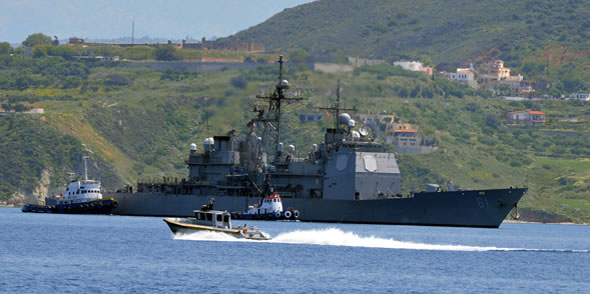
The U.S. Navy is relocating four AEGIS destroyers to be stationed at port of Rota, spain on the Atlantic Ocean coast. “The alliance is significantly boosting combined naval capabilities in the Mediterranean, and enhancing our ability to ensure the security of this vital region.” The move comes just seven months after the Pentagon sent another AEGIS ship, USS Monterey, to the Mediterranean, marking the first of the administration’s four-phase plan to put a missile defense system in Europe by 2018.

Secretary of Defense Leon E. Panetta said. These AEGIS ships will support NATO’s missile defense effort, alongside the planned positioning of radar stations and, eventually, land-based AEGIS missile systems in Romania, Poland, and Turkey. “Spain’s decision represents a critical step in implementing the European Phased Adaptive Approach, as our leaders agreed to in Lisbon. For its part, the United States is fully committed to building a missile defense capability for the full coverage and protection of all our NATO European populations, their territory and their forces against the growing threat posed by ballistic missiles.” Panetta added.
According to Spanish President José Luis Rodríguez Zapatero, by 2013, Spain would “decisively support a large part of the naval portion” of the [European missile defense] system. The system, the Spanish president added, will have a positive economic impact on Rota, requiring the presence of 1,100 military staff and their families, representing 1,000 jobs.
In addition to supporting the new missile defense capability, these Aegis ships will support the Standing NATO Maritime Groups, and maritime security cooperation activities in the Mediterranean Basin and the Atlantic Ocean. The agreement also enables the United States to provide rapid and responsive support to the U.S. Africa and U.S. Central Commands, as needed.
















